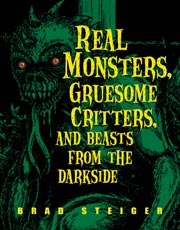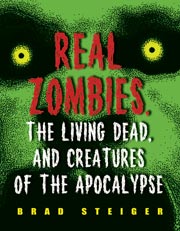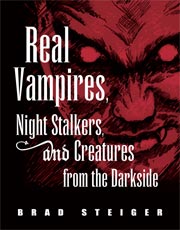Contemporary medical professionals have sought to offer rational explanations for the werewolves that have scourged the past and haunted the present. The term "lycanthropy"(from the Greek, literally, wolf-man) was used by Reginald Scot in his The Discovery of Witchcraft to denote an extreme form of violent insanity in which the individual may imitate the behavior of a wild beast, especially a wolf. Scot argued against the Church and the Inquisition and its institutionalized program of torturing and burning of witches, werewolves, and other shape-shifters; and he nearly ended up bound to a stake for his heretical efforts on behalf of reason. Scot used the term in the same manner as a modern health professional when referring to the mental disease that manifests itself in ways applicable to werewolfism.
The term lycanthropy was also applied to those individuals afflicted with a form of dark melancholy, a deep depression that gave rise to a violent form of insanity. In his Anatomy of Melancholy, Robert Burton writes that those men and women who are suffering from an advanced form of melancholy that graduates into werewolfism lie hidden throughout the daylight hours, then "go abroad in the night, barking, howling, at graves ... they have unusually hollow eyes, scabbed legs and thighs, very dry and pale."
Dr. Mary Matossian, professor of history at the University of Maryland, viewed such statistics as those from France which proclaimed that 30,000 individuals were condemned as werewolves between the years of 1520 to 1630 and wondered how such a mental aberration could possibly have been so widespread. As she researched the phenomenon, she derived a theory that the peasants were eating a rye bread that was contaminated by a fungus that acted as a powerful hallucinogenic. In essence, Dr. Matossian suggested that thousands of men and women were suffering from "bad trips" from a potent fungus that caused them to have delusions that they were magical beings capable of transforming themselves into werewolves.
According to Dr. Matossian: The fungus was ergot, a parasite that attacks rye. The ergot produces sclerotia which grow on the rye plant, taking the place of its natural seeds. The wind blows and the fungus latches onto other rye plants.
During harvesting, the ergot was collected along with the grain and became part of the bread. Since ergot is like today's LSD, some individuals suffered bad trips and imagined themselves being transformed into animals, such as wolves.
Others saw themselves with special powers, like flying on a broomstick. They were the witches. The ergot caused them to act in other bizarre ways, even committing murder and injury. As a result, numerous victims of ergot poisoning were tried as wolves and werewolves--and executed.
In the Canadian Psychiatric Association Journal in 1975, psychiatrists Frida Surawicz and Richard Banta of Lexington, Kentucky, published their paper, "Lycanthropy Revisited" in which they presented two case studies of contemporary werewolves.
Their first case, that of Mr. H., obliquely supported Dr. Mary Matossian's hallucinogenic hypothesis in that he had ingested LSD before he saw himself changing into a werewolf. He saw fur growing over his hands and face, and he craved flesh and blood. Even after the effects of the drug had supposedly worn off, Mr. H. still believed himself to be a werewolf. He was treated as a paranoid schizophrenic, treated with antipsychotic medication, and after about five weeks, released from a psychiatric unit.
Surawicz and Banta's second case study was that of a 37-year-old farmer, who, after his discharge from the Navy, began allowing his hair to grow long and began sleeping in cemeteries and howling at the moon. Although there was no indication of drug abuse or misuse in Mr. W.'s case, he was freed from his delusion after treatment with antipsychotic medication.
Psychiatrist Harvey Rosenstock and psychologist Kenneth Vincent discussed their case history of a forty-nine-year-old woman who underwent the metamorphosis into a werewolf in their paper, "A Case of Lycanthropy," published in the American Journal of Psychiatry in 1977. Although she finally was admitted to a locked psychiatric unit and received daily psychotherapy and antipsychotic drugs, she still beheld herself as a wolf woman with claws, teeth, and fangs and believed that her werewolf spirit would roam the earth long after her physical death. Medical personnel would manage to get the woman under control until the next full moon. At that time, she would snarl, howl, and resume her wolf-like behavior. She was eventually discharged and provided with antipsychotic medication, but she promised to haunt the graveyards until she found the tall, dark, hairy creature of her dreams.
From Real Monsters, Gruesome Critters, and Beasts from the Darkside by Brad Steiger, (c) 2011 Brad Steiger
Bloodcurdling, bone-chillingly fascinating, true monster stories.










